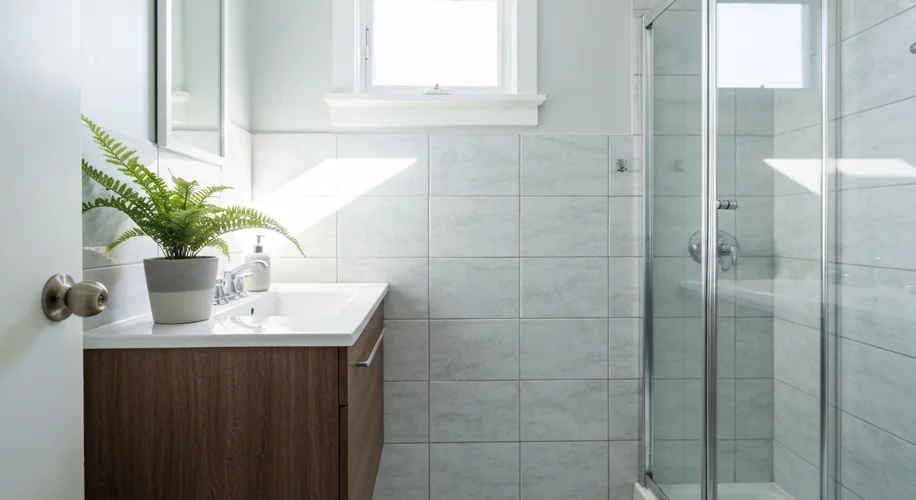So, your contractor suggested tiling over the existing tiles in your small bathroom, and you’re wondering if that’s the best move? It’s a common question, especially when aiming for a refresh without a full gut job. Let’s break down what this means and explore some alternatives.
Tiling Over Old Tile: The Upside and Downside
When a contractor proposes tiling over existing tiles, they’re usually thinking about saving you time and labor costs associated with removing the old surface. If the old tiles are in good condition – meaning they’re firmly adhered to the wall or floor, and there’s no sign of water damage or structural issues – this can be a viable option.
The main benefit is often speed. You skip the demolition, dust, and debris. However, there are some important considerations:
- Height Increase: Adding a new layer of tile and the necessary adhesive will raise the surface level. This can affect door clearances, trim, and the overall look, especially in a small space.
- Adhesion: The new tiles rely entirely on the old tiles being a perfect, smooth surface. Any loose tiles or unevenness underneath will cause problems.
- Grout Lines: If the old tiles have deep grout lines, these might show through the new tile unless a leveling compound is used, adding complexity and cost.
Beyond Tiling Over: Smart Alternatives for Your Small Bathroom
While tiling over is an option, it’s worth exploring other ways to update your small bathroom that might offer better long-term results or a different aesthetic.
- Resurfacing/Refinishing: For certain types of tiles, especially ceramic or porcelain, resurfacing is a fantastic option. This involves cleaning the existing tiles thoroughly and then applying a specialized coating or paint designed for bathrooms. It’s a less invasive process, adds minimal thickness, and can completely change the look. Think of it like a refresh for your tile.
-
Waterproof Wall Panels: Instead of individual tiles, consider large-format waterproof wall panels. Materials like solid surface, acrylic, or even some high-quality laminate options can mimic the look of tile or stone without the grout lines. Installation is often quicker, and they offer a seamless, modern look that can make a small bathroom feel more expansive. Plus, no grout means easier cleaning!
-
Tile Removal and New Installation: While it’s more work, sometimes the best way to ensure a lasting, high-quality renovation is to remove the old tiles completely. This allows you to inspect the substrate for any hidden issues, ensure a perfectly flat surface for the new tile, and avoid any issues with increased height or potential delamination down the line. If you’re looking for a significant change, this is often the most reliable path.
-
Focus on Fixtures and Paint: If the tiles themselves are in decent shape, a simpler refresh might be enough. Updating the vanity, faucet, light fixtures, and a fresh coat of paint can make a huge difference in a small bathroom without touching the tiles at all. Sometimes, a bit of styling and new accessories are all you need!
Making the Right Choice
Before deciding, talk to your contractor about the specifics of your existing tile situation. Ask about the type of tile, its condition, and the exact process they’d use for tiling over. Weigh the pros and cons – cost, time, aesthetics, and long-term durability. Sometimes, a little extra effort upfront can save you headaches later on. And remember, in a small bathroom, every inch counts, so consider how any new layer will affect the space’s feel and functionality.

